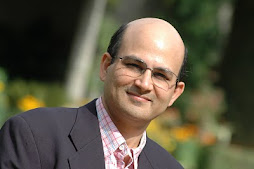The recent release of the QS University rankings for 2012 once again put the spotlight on the challenges before Indian universities. India has no institution within the top 200 universities in the world, a sad statistic for a country that is aspiring to superpower status. There have been several analyses of why India doesn’t do well on these rankings, and I won’t cover that ground here. But, for a useful and practical assessment of how Indian institutions can bridge the gap, I recommend Dheeraj Sanghi’s blog on the subject.
Thomson Reuters 2012 Research Excellence India Citation Awards
One of the areas in which Indian institutions usually fall behind their global peers in such rankings is research output. Thomson Reuters announced its 2012 Research Excellence India Citation Awards a couple of weeks ago, and the list of awardees provides some insight into where excellent research is being done. The list also tells us something about the fields in which we have individuals doing outstanding research. Remember, that these highly productive, top notch researchers are responsible for creating the research reputation of a School.
The Thomson Reuters methodology is described on their website. Essentially, they have identified 10 Indian researchers who have consistently published highly cited papers over the period 2002-2011. Each researcher in their award list had at least 5 papers that were among the top 1% of cited papers in their respective field over the period of review.
The list is shown in the following graphic.
Key Findings
It’s good to see a couple of very high impact researchers at less renowned universities. We should salute these “bright spots” and understand how they have been able to do such good work amidst institutional constraints.
These citation awards underline a major challenge before Indian S&T research. Our strengths still lie in areas where we were traditionally strong like Theoretical Physics and Chemistry. We have not been able to nurture or support high impact researchers in emerging technology areas. Our top engineering schools, while producing lots of papers, are not producing enough high impact research. Changing this should be top on the agenda of our top science and technology academies.
A caution: Winners of previous Thomson Reuters India awards in 2004, 2006, 2009 were not considered this time. A more comprehensive analysis will need to take their names into account.
Thomson Reuters 2012 Research Excellence India Citation Awards
One of the areas in which Indian institutions usually fall behind their global peers in such rankings is research output. Thomson Reuters announced its 2012 Research Excellence India Citation Awards a couple of weeks ago, and the list of awardees provides some insight into where excellent research is being done. The list also tells us something about the fields in which we have individuals doing outstanding research. Remember, that these highly productive, top notch researchers are responsible for creating the research reputation of a School.
The Thomson Reuters methodology is described on their website. Essentially, they have identified 10 Indian researchers who have consistently published highly cited papers over the period 2002-2011. Each researcher in their award list had at least 5 papers that were among the top 1% of cited papers in their respective field over the period of review.
The list is shown in the following graphic.
Key Findings
- 4 out of 10 awardees are theoretical physicists, and a fifth, though classified by Thomson Reuters under Applied Physics and Materials Science, is a Professor of Theoretical Science. So, 50% of the top awardees are essentially Physics theorists.
- 3 out of 10 awardees are Chemists.
- Only 1 awardee belongs to an Engineering discipline. None of the awardees belong to Computer Science or Electronics.
- Only 1 awardee is in a frontier technology discipline with strong industry relevance – nanobiotechnology.
- Only 1 awardee works in an IIT. There is no awardee from the Indian Institute of Science.
- 3 awardees out of 10 belong to the university system. 5 out of 10 are in specialized research centres. 1, who is now in industry, was at a CSIR national laboratory for a part of the 10 year period.
It’s good to see a couple of very high impact researchers at less renowned universities. We should salute these “bright spots” and understand how they have been able to do such good work amidst institutional constraints.
These citation awards underline a major challenge before Indian S&T research. Our strengths still lie in areas where we were traditionally strong like Theoretical Physics and Chemistry. We have not been able to nurture or support high impact researchers in emerging technology areas. Our top engineering schools, while producing lots of papers, are not producing enough high impact research. Changing this should be top on the agenda of our top science and technology academies.
A caution: Winners of previous Thomson Reuters India awards in 2004, 2006, 2009 were not considered this time. A more comprehensive analysis will need to take their names into account.































It something which is not conected to any of the discussions here.
ReplyDeleteBut this something which I have been dreaming of late.
Sometime I think, why Indian scientist cannot think of developing wireless charging system (WLCS) at a much larger scale.
Wireless charging parse is not a new idea at all; it is already available in mobile platforms where the scale is much lower.
At a much large scale to have ground based charging stations which may eventually kick-start a automatic charging process (something like a dynamo) - for application in glider and later scale up to manned aeroplanes). Of course, there would be design change required to give way for smaller level turbines which will provide the dynamo with the necessary mechanical energy support). This later would be working like dynamo, which is self sufficient.
Murali Kallummal